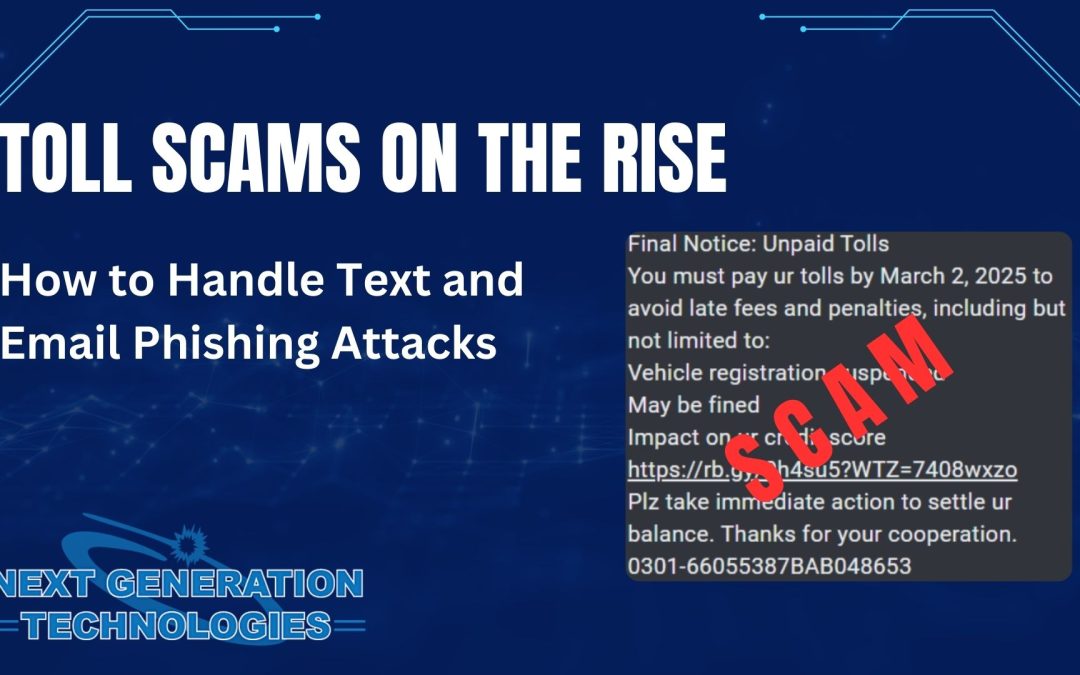What To Do If You Receive a Toll Road Scam
All across the country there has been an increase in texting scams. One of the more recent scams is the impersonation of state tolling agencies like E-ZPass and FastTrak. They claim customers have unpaid tolls and threaten fines and other penalties if it is not paid before their deadline.
A Brief Overview
For the uninitiated, tolling agencies throughout the United States have begun using passes, accounts, and cameras that track license plates. People who have an account will register their vehicle to the account. Whenever their vehicle passes a toll booth, the pass or license plate can be scanned and the toll automatically deducted from their account. If the driver decides not to have an account with the toll agency, a bill will be sent to the registered owner of the vehicle.
Scammers are trying to use this process to trick unsuspecting victims into revealing personal information.
Tolling agencies are aware of this scam and many have already shared alerts on their websites. See the alert posted by tolling agency E-470 of Colorado.
What Is The Issue?
People in the Midwest are receiving text message scams about paying toll fees. Scammers are impersonating tolling authorities and sending waves of messages about unpaid toll bills and a link you can use to pay them. The more benign criminals are merely looking for an easy payout and your financial information like bank accounts or credit cards. The malicious will use the weblink they provided to compromise your device with malware should you click it.
Below is an example of the text messages which have been received:

This kind of attack is known as “smishing”, a type of phishing attack using SMS text messaging.
What Can Be Done About It?
What can you do to protect yourself from this smishing attack? Like it or not, you will probably encounter this and other phishing attacks. Fortunately there are steps you can take to mitigate your risk.
First and foremost, do not click the link of ANY unsolicited messages. If you were not expecting the message, don’t trust the links it contains.
Second- do not let the threat of penalties cause you to panic or abandon critical thinking. Ask the important questions. Does it make sense that I would receive a message like this? Is their behavior and message consistent with what I expect from a tolling authority? For example, the message shared above uses texting shorthand like “ur” in place of “your” and “plz” instead of “please”. Would a tolling authority write a message in that fashion?
Third- contact the toll authority directly, not using the links or phone numbers provided by the suspicious message. This is referred to as out-of-band communication. You should be able to check your account balance from a legitimate toll service website.
Fourth- report and delete the suspicious text. Most texting apps have a “report junk” feature when the sender is not in your contact list. This feature is used by your carrier to mark messages as potential spam and can improve the carrier’s spam detection.
Fifth- if you clicked the link or provided information by mistake, take steps to secure personal and financial information. Notify your bank to be wary of unusual charges. Change any compromised passwords.
In Summary
The steps you should take:
- Do not click links
- Ask important questions about the message
- Check if you have toll fees by accessing legitimate toll service websites
- Report and delete the message
- Secure personal and financial info if you believe you are compromised
As always, NGT is here to help!
Contact ngthelp.com with questions.
